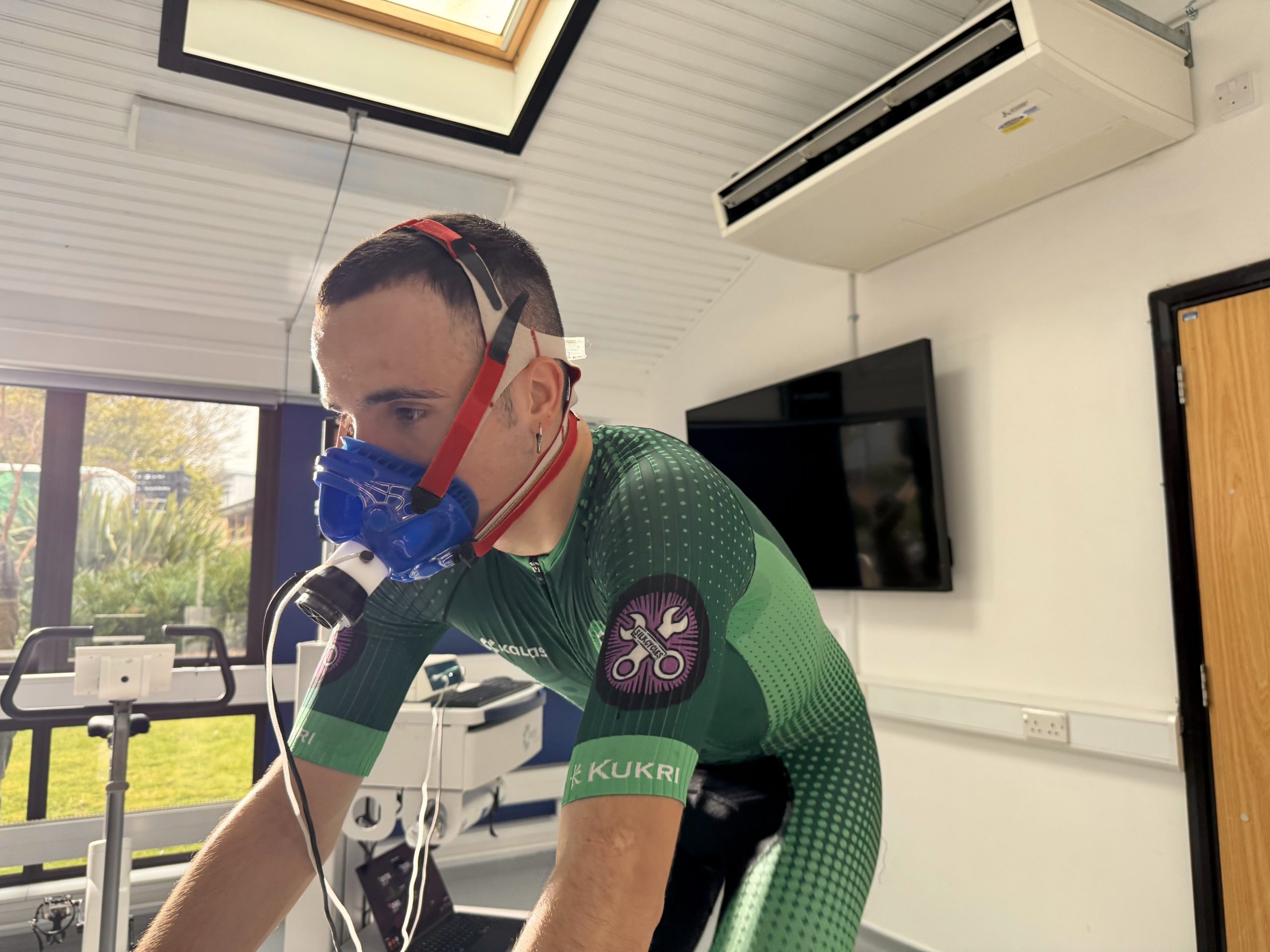Cycling
Essentials
Get the data that matter the most
Test duration: ~90 minutes
- Determination of your Lactate Thresholds
- Training zones based on your Power and Heart Rate
- Exercise efficiency
- Physiological profiling based on obtained results
Advanced
Have your test data analysed interpreted by leading experts
Test duration: ~120 minutes
- All what you get in the Essentials with addition of:
- Maximal oxygen uptake (VO₂max) test
- Physiological profiling conducted by Dr Tim Podlogar
Ultimate
The ultimate way of getting to know your physiology
Test duration: ~140 minutes
- All what you get in the Advanced with addition of:
- Body composition analysis (BodPod)
- 30-min Q&A session with Dr Tim Podlogar
- Individualised racing nutrition recommendations by Dr Tim Podlogar
Glossary
Lactate Thresholds (LT1 & LT2)
Lactate thresholds refer to the exercise intensities at which lactate accumulation in the blood increases significantly. They are crucial for setting the training zones.
- LT1 (Lactate Threshold 1): The first lactate threshold (LT1) represents the intensity at which blood lactate levels start to rise slightly above baseline. It represents the highest intensity at which the body can primarily rely on aerobic metabolism without significant lactate accumulation. Training just below or at LT1 improves endurance and fat metabolism efficiency. It sets the upper boundary of Zone 2 training.
- LT2 (Lactate Threshold 2 or Lactate Turnpoint): The second lactate threshold (LT2) is the last intensity at which you can maintain stable blood lactate concentrations. Above LT2, lactate accumulation rises rapidly and fatigue ensues relatively quickly. LT2 is often used to define the maximum sustainable intensity for endurance events. LT2 is very close to the terms such as Critical Power (CP) and Functional Threshold Power (FTP). LT2 defines training zone 4.
Training zones
Training zones are defined intensity ranges based on heart rate, power output, or blood lactate levels. They guide structured training to maximise performance improvements while balancing recovery.
- Zone 1 (Very easy): Very low intensity training.
- Zone 2 (Endurance): Moderate intensity that enhances aerobic base and fat utilisation.
- Zone 3 (Tempo): Moderate-to-high intensity training aiming at muscular endurance and aerobic capacity
- Zone 4 (Threshold): Near LT2, developing lactate clearance and race pace endurance.
- Zone 5 (High Intensity Intervals): High-intensity training improving maximal oxygen uptake.
- Zone 6 (Anaerobic Capacity): Short bursts of very high-intensity efforts improving sprinting power.
- Zone 7 (Neuromuscular Power): Maximal short-duration efforts enhancing explosive power.
Maximal Oxygen Uptake
VO₂max represents the maximum rate at which your body can take in, transport, and utilise oxygen during intense exercise. It is a key marker of aerobic endurance and cardiovascular fitness. A higher VO₂ Max generally indicates a greater ability to sustain high-intensity efforts over time.
Exercise Efficiency
Not all the energy you expend during exercise goes to turning bicycle pedals. The vast majority actually goes to heat production. Exercise efficiency measures how much energy is required to produce a given amount of external power. Athletes with higher efficiency use less energy to sustain a given workload, leading to better endurance and performance. Efficiency can be improved through training and biomechanics optimisation.
A Physiological Profiling
A Physiological Profiling analysis in a sports physiology context helps assess an athlete’s physical condition and training strategy based on individual’s test results.
